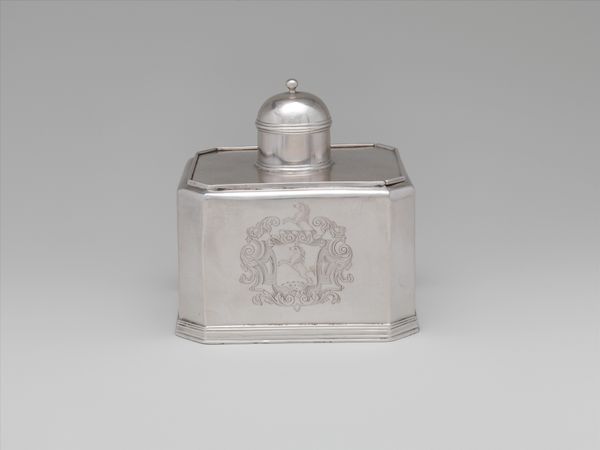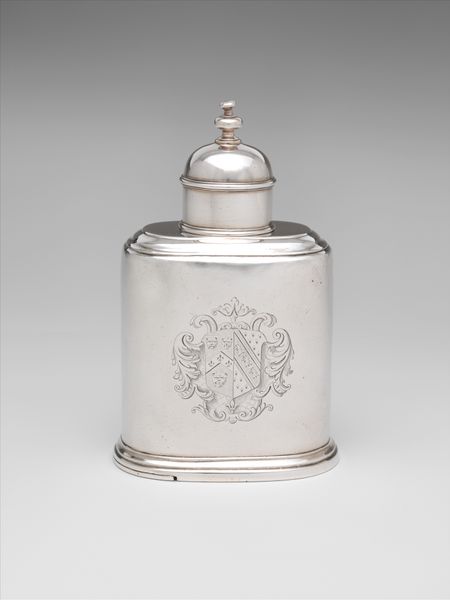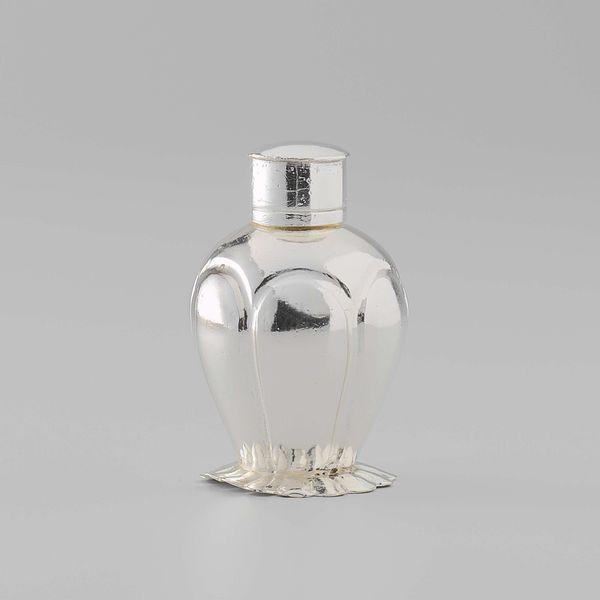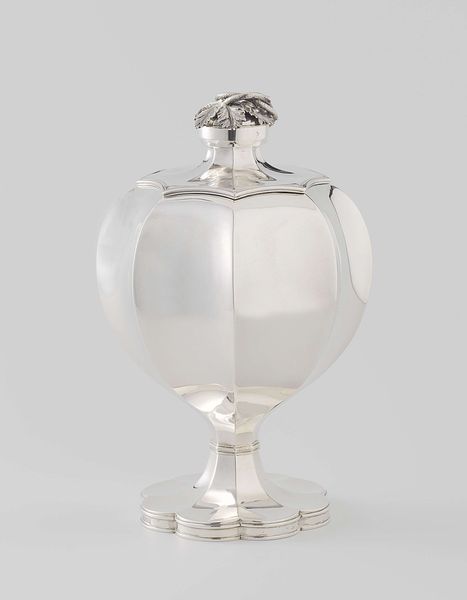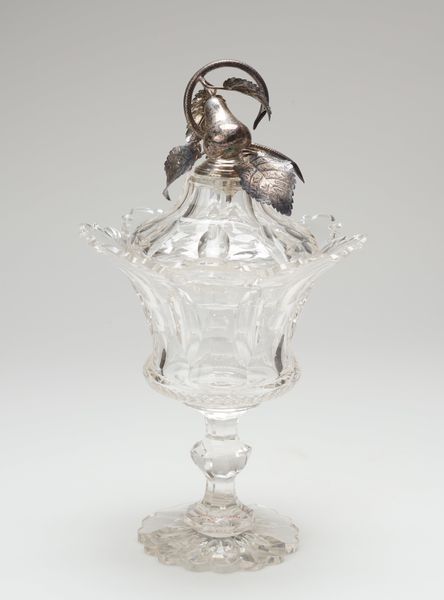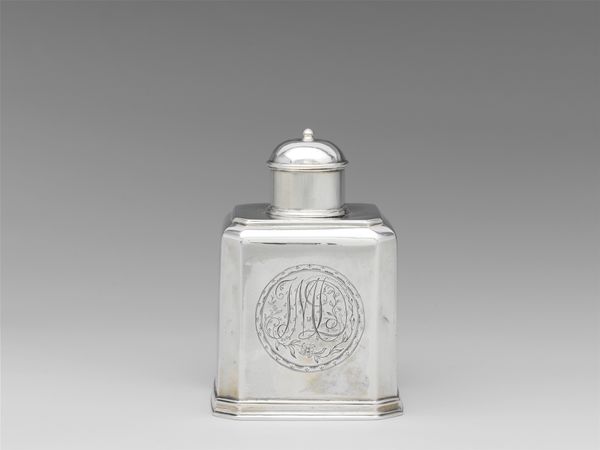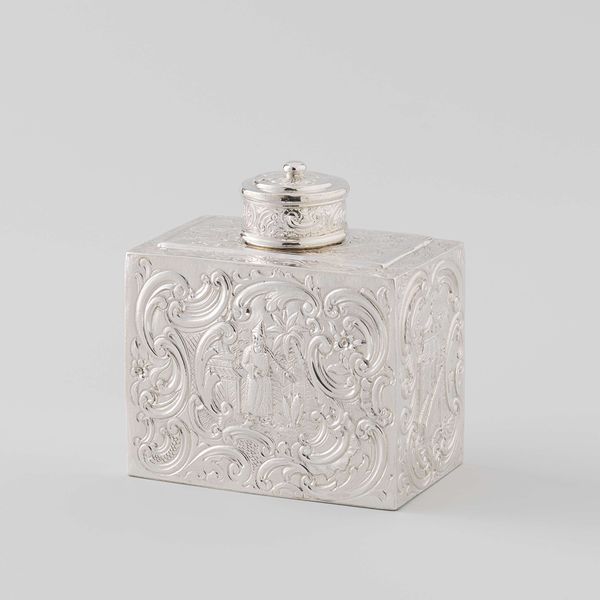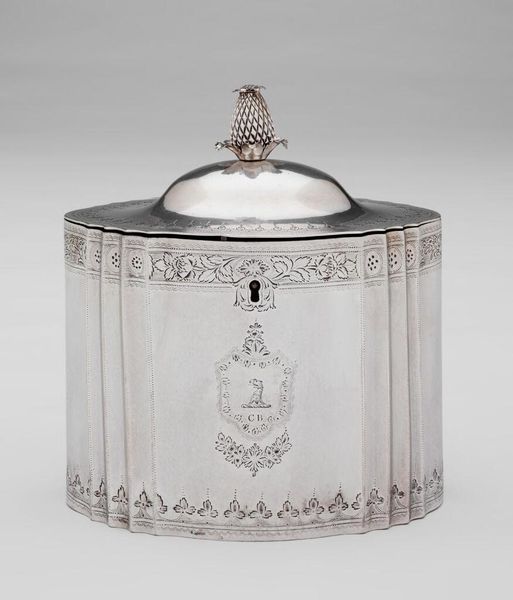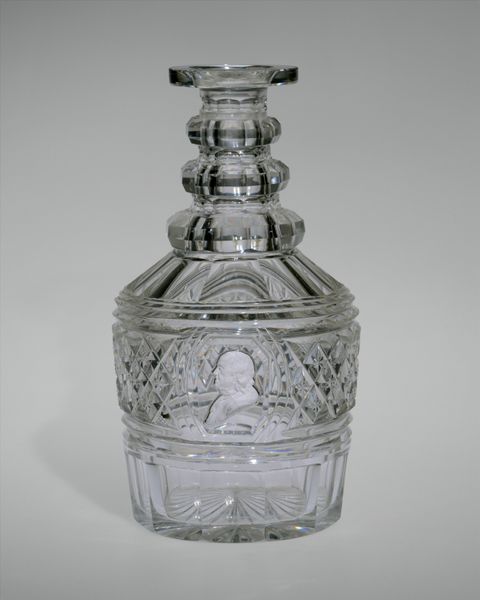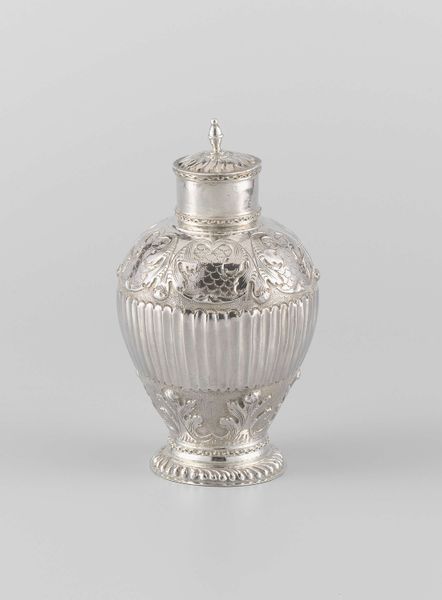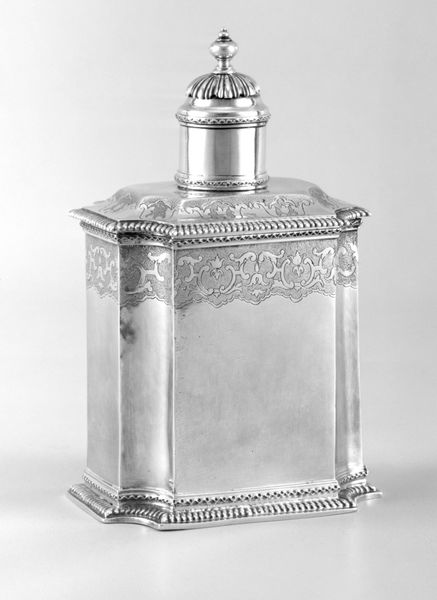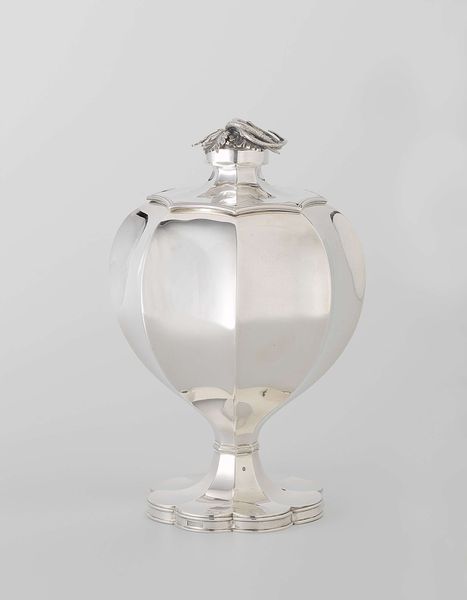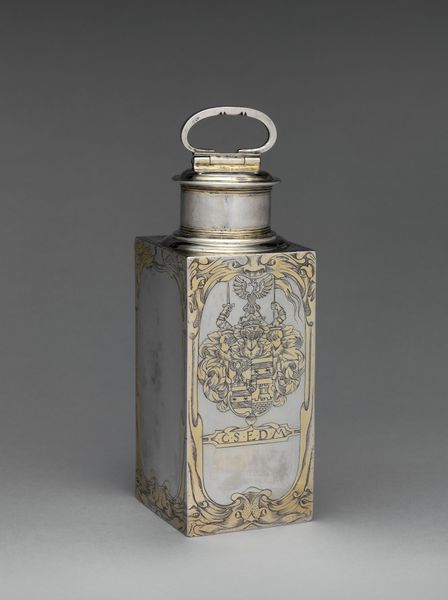
silver, metal, photography
#
portrait
#
silver
#
metal
#
photography
#
decorative-art
Dimensions: Overall: 4 5/16 x 2 11/16 x 2 1/4 in. (11 x 6.8 x 5.7 cm); 5 oz. 15 dwt. (178 g) Body: 3 11/16 in. (9.4 cm); 5 oz. 1 dwt. (156.6 g) Cover: 1 3/8 x 1 1/4 in. (3.5 x 3.2 cm); 14 dwt. (21.4 g)
Copyright: Public Domain
Curator: This elegant object, currently residing at the Metropolitan Museum of Art, is a silver tea caddy, believed to have been crafted between 1725 and 1740 by Simeon Soumaine. Editor: It’s deceptively simple, isn't it? The starkness of the silver gives it such a cool, almost severe quality, but then your eye is caught by the heraldry, which has such intricate detailing. It creates a strange juxtaposition, but something tells me it's trying to speak to a cultural critique of class dynamics. Curator: Exactly! I think it's about accessible luxury and displays of wealth. Silver, being precious, signaled status, but tea itself was becoming a widespread, if still relatively expensive, commodity. This caddy straddles that line. And I love how this isn’t some ostentatious, large baroque display. It has this beautiful compact geometrical shape with a circular cap—there’s almost something modernist about it. Editor: Yet we shouldn’t forget how exclusionary it was. Tea, heavily taxed and intertwined with colonial exploitation and enslavement, hides a troubling underbelly behind its elegant façade, doesn't it? This tea caddy whispers of empires and stolen resources and class divisions. The rise of the middle class aspiring to mimic aristocratic consumption is a fascinating power play that demands constant examination. Curator: That's so important to remember, to unravel this historical knot of colonialism, economy, and aesthetics. What’s compelling, at least to me, is its simultaneous association with quiet moments of reflection. The ritual of tea-drinking... do you ever wonder who the coat-of-arms belonged to and what were their rituals like around it? I suppose their privilege allowed for these leisurely moments, which aren’t accessible to many even today. Editor: Absolutely. So, this silver vessel becomes more than a mere container. It is also a mirror reflecting societal inequalities, colonial history, gender roles, and the complicated dance between possession and display. It reminds us to look beyond the aesthetic appeal and unpack its history and all its contradictions. Curator: Right. Perhaps something to contemplate during our next cup of tea! Editor: To truly savor it, it definitely is!
Comments
No comments
Be the first to comment and join the conversation on the ultimate creative platform.
